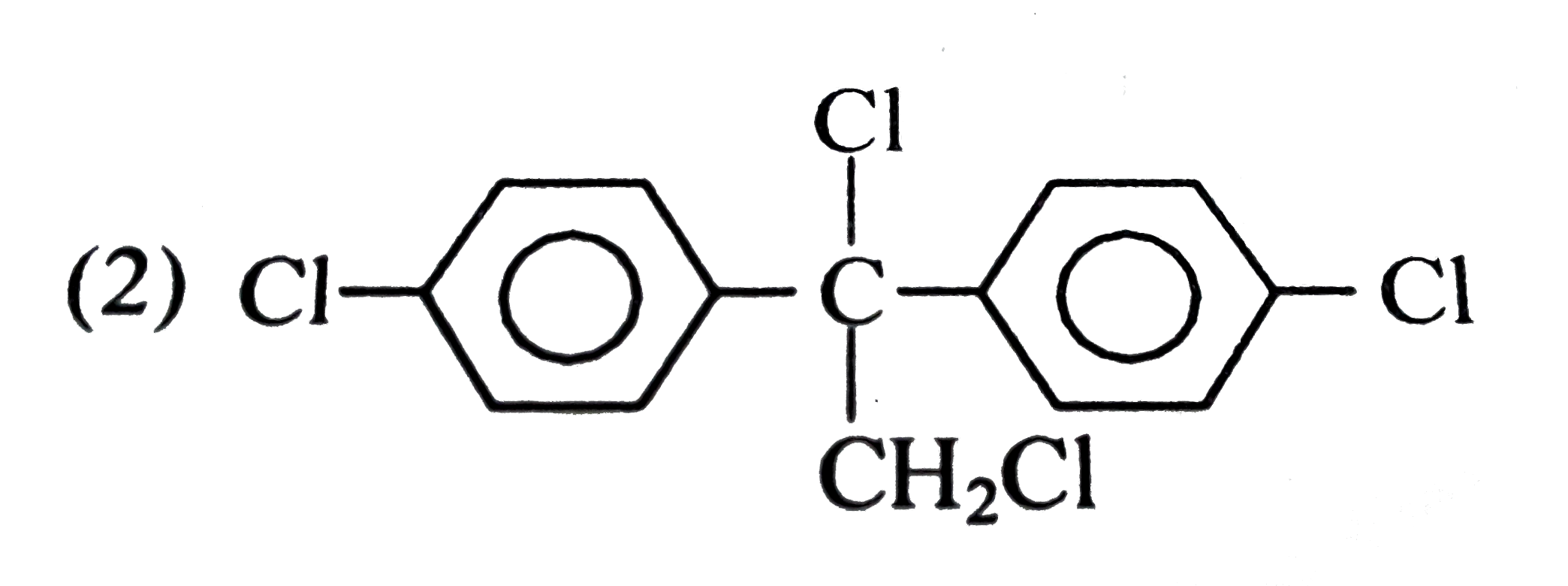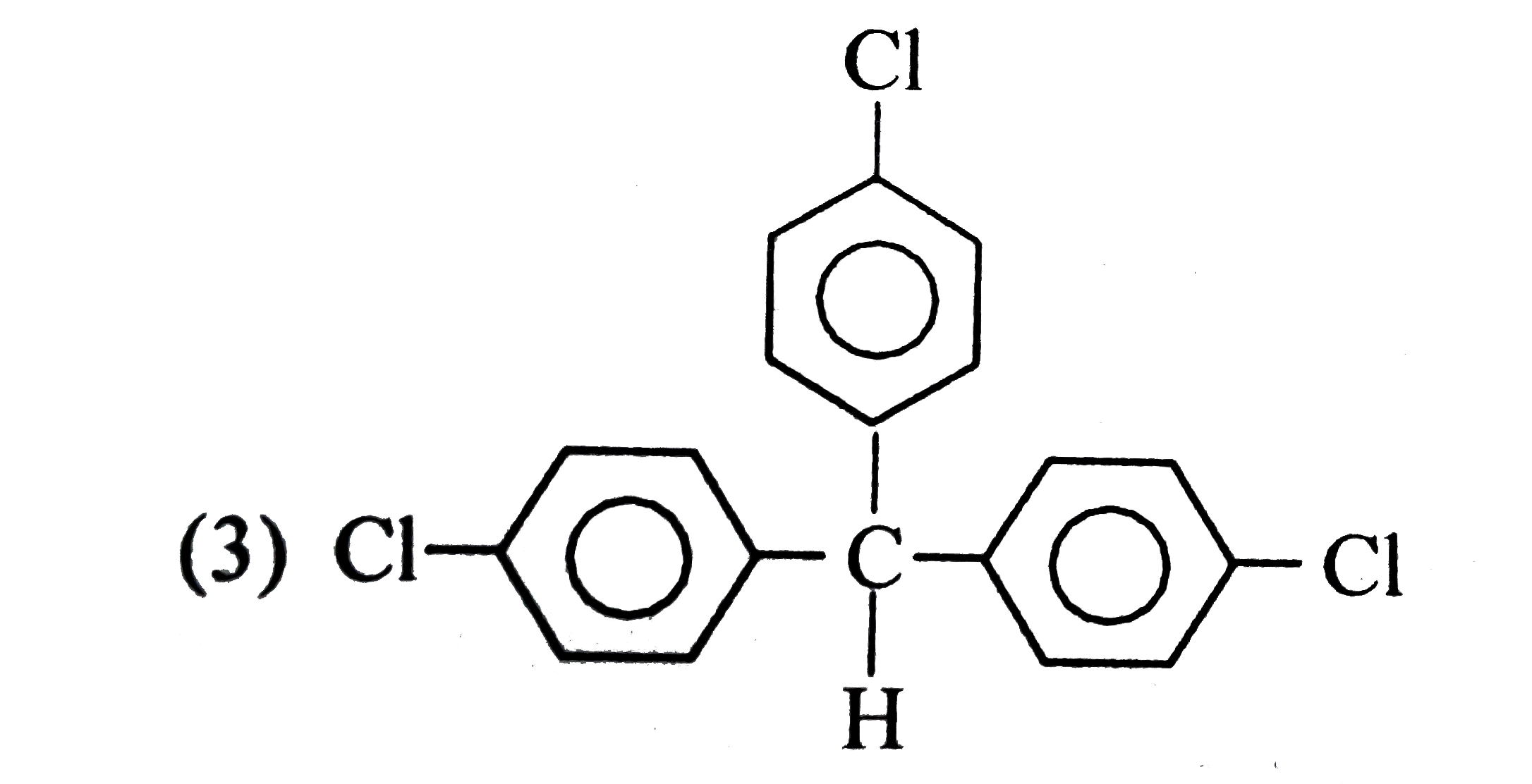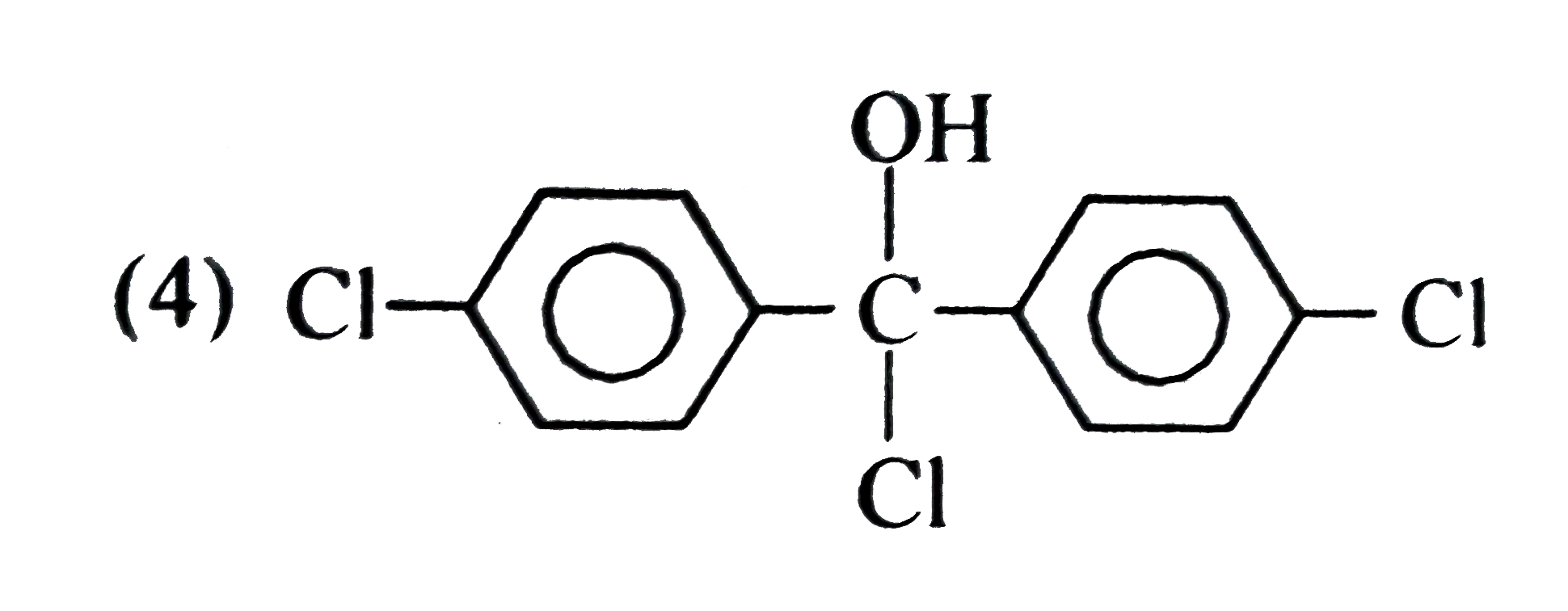Trichloroacetaldehyde, CCl3CHO reacts with chlorobenzene in presence of sulphuric acid and produces.




The correct Answer is:A
To solve the problem of what product is formed when trichloroacetaldehyde (CCl3CHO) reacts with chlorobenzene in the presence of sulfuric acid, we can follow these steps:
Step 1: Identify the Reactants
We have two reactants:
1. Trichloroacetaldehyde (CCl3CHO)
2. Chlorobenzene (C6H5Cl)
Step 2: Understand the Reaction Conditions
The reaction occurs in the presence of sulfuric acid (H2SO4), which acts as a catalyst. This suggests that we may be looking at a condensation reaction where water is eliminated.
Step 3: Draw the Structures
- Trichloroacetaldehyde (CCl3CHO) has a carbonyl group (C=O) and a formyl group (–CHO).
- Chlorobenzene (C6H5Cl) is a benzene ring with a chlorine substituent.
Step 4: Reaction Mechanism
The reaction involves the formation of a new bond between the carbon of the trichloroacetaldehyde and the chlorobenzene. The aldehyde group will react with the chlorobenzene, leading to the elimination of a water molecule (H2O).
Step 5: Form the Product
The product formed from this reaction is Dichlorodiphenyltrichloroethane (DDT). The structure can be represented as follows:
- The central carbon is bonded to the trichloro group (CCl3).
- On either side of this carbon, there are two chlorobenzene rings (C6H5).
Step 6: Final Structure
The final structure can be depicted as:
- A central carbon atom bonded to a trichloro group (CCl3).
- Two chlorobenzene rings (C6H5) attached to the central carbon.
Conclusion
The product formed from the reaction of trichloroacetaldehyde with chlorobenzene in the presence of sulfuric acid is Dichlorodiphenyltrichloroethane (DDT).
We have two reactants:
1. Trichloroacetaldehyde (CCl3CHO)
2. Chlorobenzene (C6H5Cl)
The reaction occurs in the presence of sulfuric acid (H2SO4), which acts as a catalyst. This suggests that we may be looking at a condensation reaction where water is eliminated.
- Trichloroacetaldehyde (CCl3CHO) has a carbonyl group (C=O) and a formyl group (–CHO).
- Chlorobenzene (C6H5Cl) is a benzene ring with a chlorine substituent.
The reaction involves the formation of a new bond between the carbon of the trichloroacetaldehyde and the chlorobenzene. The aldehyde group will react with the chlorobenzene, leading to the elimination of a water molecule (H2O).
The product formed from this reaction is Dichlorodiphenyltrichloroethane (DDT). The structure can be represented as follows:
- The central carbon is bonded to the trichloro group (CCl3).
- On either side of this carbon, there are two chlorobenzene rings (C6H5).
The final structure can be depicted as:
- A central carbon atom bonded to a trichloro group (CCl3).
- Two chlorobenzene rings (C6H5) attached to the central carbon.
The product formed from the reaction of trichloroacetaldehyde with chlorobenzene in the presence of sulfuric acid is Dichlorodiphenyltrichloroethane (DDT).
Similar Questions
Knowledge Check
Phenol reacts with acetone in the presence of conc. sulphuric acid to form a C15H16O2 product. Which of the following compounds is this product ?
A B
B C
C D
D
The compound formed on heating chlorobenzene with chloral in the presence of concentrated sulphuric acid, is :
AFreonBDDTCGammexeneDHexachloroethane
The treatment of benzene with isobutene in the presence of sulphuric acid gives
View SolutionThe product formed when ethene gas reacts with water in the presence of sulphuric acid is______ (ethanol/ethanal/ethanoic acid)
View SolutionThe product formed by the reaction of acetaldehyde with excess of ethanol in the presence of sulphuric acid is:
View SolutionCl3C.CHO will reacts with water.True/False
View Solution(i) An organic compound A with molecular formula C7H8 on oxidation by chromyl chloride in the presence of CCl4 gives a compound B which gives positive Tollen's test. The compound B on treatment with NaOH followed by acid hydrolysis gives two product C and D. C on oxidation gives B which on further oxidation gives D. the compound D on distillation with sodalime gives a hydrocarbon E. Below 60∘C, concentrated nitric acid reacts with E in the presence of concentrated sulphuric acid forming a compound F. identify the compounds A,B,C,D,E and F.
(ii) Give chemical test to distinguish : Formaldehyde and acetaldehyde.
View SolutionThe compound formed on heating chlorobenzene with chloral in the presence of concentrated sulphuric acid is-
View Solution
